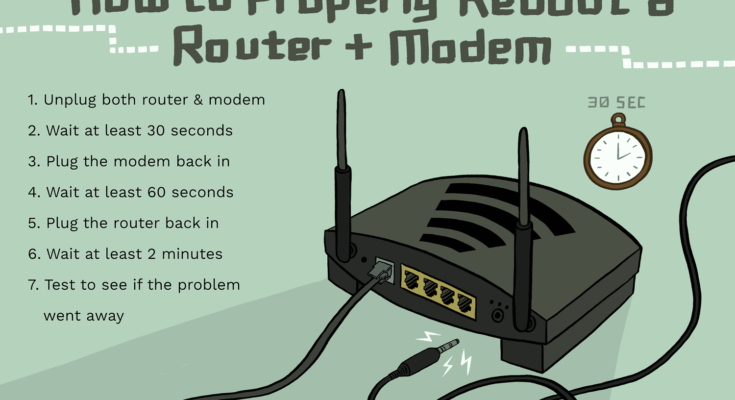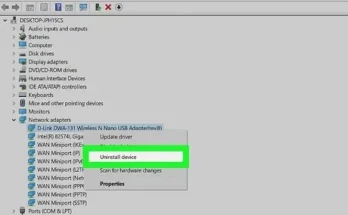I reset my router and now cannot connect to the internet. This issue often stems from incorrect settings or network configurations.
Resetting a router can sometimes lead to connectivity issues. There are a few common reasons for this problem. First, your router might not have properly saved the previous settings. Second, the device configurations might have reverted to factory defaults. Third, there might be an issue with your ISP settings.
To resolve this, ensure that your modem is properly connected to your router. Re-enter the necessary network settings if required. You may also need to reboot both your modem and router. If the issue persists, contact your internet service provider for further assistance. Proper troubleshooting can help restore your internet connection quickly.

Credit: www.reddit.com
Initial Checks
Resetting your router can sometimes lead to unexpected issues. If you can’t connect to the internet, follow these initial checks. These steps will help you diagnose and fix the problem quickly.
Power Cycle
First, try a power cycle. This simple step can resolve many connectivity issues.
- Unplug the router from the power source.
- Wait for at least 30 seconds.
- Plug the router back in.
- Wait until all the lights on the router are stable.
After doing this, check if you can connect to the internet.
Cables And Connections
Next, inspect all the cables and connections. A loose or damaged cable can cause connectivity problems.
- Ensure the power cable is securely connected to the router.
- Check the Ethernet cable connecting the router to the modem.
- Verify that all cables are intact and not damaged.
If you find any issues with the cables, replace them. Then, try connecting to the internet again.

Credit: www.reddit.com
Router Settings
Resetting your router might seem easy. But sometimes it causes problems. If you can’t connect to the internet, you might need to check your router settings. Understanding these settings can help you fix the problem quickly.
Default Configuration
After a reset, your router returns to its default settings. This means any custom changes you made are now gone. You need to reconfigure it to connect again.
| Setting | Default Value |
|---|---|
| IP Address | 192.168.1.1 |
| Username | admin |
| Password | admin |
Access the router settings by typing the IP address into your browser’s address bar. Log in using the default username and password. Be sure to change these to secure your network.
Wi-fi Network Name
Your Wi-Fi network name, also known as the SSID, may reset too. This name helps you identify your network among others. By default, it might be the brand name or a generic name.
- Open the router settings page.
- Find the ‘Wireless’ or ‘Wi-Fi’ section.
- Locate the ‘SSID’ field.
- Enter your desired network name.
- Save the changes.
After saving, reconnect your devices using the new network name. Ensure your password is strong to keep your network secure.
Understanding router settings helps troubleshoot connection issues. Keep your settings documented for easy reference in the future.
Isp Issues
Sometimes, resetting your router causes connectivity issues. One common reason is problems with your Internet Service Provider (ISP). Below, we explore some ISP issues that could be the culprit.
Service Outages
ISPs occasionally experience service outages. These can be local or widespread. Check your ISP’s website or social media pages for updates. You can also call their customer service line. If there is an outage, wait for the service to be restored.
Here are some common causes for service outages:
- Weather conditions
- Technical issues at the ISP’s end
- Maintenance work
Use these steps to check for service outages:
- Visit your ISP’s website.
- Look for outage maps or notifications.
- Check social media for updates.
- Call customer service for confirmation.
Account Status
Your account status with the ISP can also affect connectivity. If your account is not in good standing, your service may be suspended. Common issues include:
- Unpaid bills
- Expired contracts
- Account verification problems
To check your account status:
- Log in to your ISP’s customer portal.
- Review your account details.
- Ensure all bills are paid.
- Verify your account information.
If you find any issues, contact your ISP immediately. Resolving account issues can restore your internet connection quickly.

Credit: www.youtube.com
Device Configuration
Resetting your router can often lead to connection issues. The router loses its settings and needs reconfiguration. Understanding device configuration is crucial to restore your internet connection.
Network Settings
Accessing your router’s network settings is the first step. Open a browser and type your router’s IP address. This address is usually found at the back of your router or in its manual.
Once you access the router’s settings page, enter the default username and password. These credentials are often “admin” and “password” unless previously changed.
Navigate to the network settings section. Here, you can configure the SSID, password, and security settings. Ensure the SSID is unique and the password is strong.
| Setting | Description |
|---|---|
| SSID | Your network name |
| Password | Network access key |
| Security | WPA2 recommended for security |
Ip Address Renewal
Sometimes, devices fail to get a new IP address after a router reset. Renewing the IP address can solve this.
On Windows, open Command Prompt and type:
ipconfig /release
Then type:
ipconfig /renew
On Mac, go to System Preferences > Network. Select your network and click “Advanced.” Then, go to the TCP/IP tab and click “Renew DHCP Lease.”
These steps will assign a new IP address to your device. This often fixes connection issues after a router reset.
- Open Command Prompt or Terminal
- Type necessary commands
- Check your connection
Firmware Updates
Resetting your router might disrupt your internet connection. One common issue is outdated firmware. Keeping your router’s firmware up-to-date ensures better performance and security. Follow these steps to check and update your router’s firmware.
Current Version
First, you need to know the current firmware version. Log into your router’s admin panel. Usually, you can do this by typing 192.168.1.1 or 192.168.0.1 in your browser’s address bar.
Use your admin credentials to log in. Once logged in, find the Firmware Version section. This is often under the System or About tab. Note down the version number.
Update Process
Updating your firmware is crucial. Follow these simple steps:
- Go to the manufacturer’s website.
- Search for your router model.
- Download the latest firmware file.
- Return to your router’s admin panel.
- Navigate to the Firmware Update section.
- Click on Choose File and select the downloaded file.
- Click Update and wait for the process to complete.
Do not turn off your router during the update. This can cause serious issues. Wait for the update to finish. Your router will reboot automatically.
Firmware updates can solve many connectivity issues. Always keep your firmware up-to-date for a smooth internet experience.
Advanced Troubleshooting
Resetting a router can sometimes lead to unexpected issues. After a reset, you might find yourself unable to connect to the internet. This section focuses on advanced troubleshooting to help you get back online. Follow these steps to resolve the problem.
Factory Reset
A factory reset restores your router to its original settings. This can solve many issues.
- Locate the reset button on your router.
- Press and hold the button for 10-15 seconds.
- Wait for the router to reboot.
- Reconfigure your network settings.
Note: A factory reset will erase all custom settings. Ensure you have the default login credentials.
Dns Settings
Incorrect DNS settings can cause connection issues. Adjusting these settings might resolve the problem.
Follow these steps to check and update your DNS settings:
- Access your router’s admin panel.
- Navigate to the DNS settings section.
- Enter a reliable DNS server, such as Google’s (8.8.8.8 and 8.8.4.4).
- Save the changes and restart your router.
Using a reliable DNS server can improve connection stability.
If these steps do not resolve the issue, contact your ISP for further assistance.
Security Settings
Resetting your router can sometimes disrupt your internet connection. Often, the issue lies in the security settings. Let’s explore some key areas that might help you reconnect. These include Firewall Configuration and Parental Controls.
Firewall Configuration
Your router’s firewall protects your network from unauthorized access. Sometimes, resetting the router changes these settings. To check this:
- Log in to your router’s admin panel.
- Navigate to the Security or Firewall section.
- Ensure the firewall is not blocking your internet connection.
- Adjust the settings if needed, and save the changes.
If unsure, consult your router’s manual or support website for guidance.
Parental Controls
Parental controls help manage internet access for children. A router reset may revert these settings. To review:
- Access the router’s admin panel.
- Go to the Parental Controls section.
- Check if restrictions are blocking internet access.
- Modify or disable these controls temporarily to test the connection.
Parental controls can unintentionally block your device. Adjust as needed to restore internet access.
Contacting Support
Having trouble connecting to the internet after resetting your router? Contacting support can resolve your issue quickly. Here’s how you can get help from both your ISP and router manufacturer.
Isp Support
Contacting your Internet Service Provider (ISP) is often the first step. They can diagnose connection issues from their end. Follow these steps to reach out to your ISP:
- Visit the ISP’s website.
- Find their support or contact page.
- Use the chat, call, or email options provided.
When you contact them, provide the following information:
| Information | Details |
|---|---|
| Account Number | Your ISP account number for identification. |
| Router Model | The model number of your router. |
| Error Messages | Any error messages displayed on your devices. |
ISPs can often resolve issues remotely. They may also guide you through resetting your connection or updating firmware.
Router Manufacturer
If contacting your ISP doesn’t help, try reaching out to your router manufacturer. They have specialized knowledge about their devices. To contact them, follow these steps:
- Visit the manufacturer’s website.
- Navigate to the support section.
- Choose the contact method: chat, call, or email.
When you reach out, provide the following:
- Router model and serial number.
- Details of the issue faced.
- Steps already taken to fix the issue.
They might offer firmware updates, troubleshooting steps, or suggest hardware checks.
By contacting support, you can often restore your internet connection swiftly. Both your ISP and router manufacturer can provide valuable assistance.
Frequently Asked Questions
How Do I Connect To Wi-fi After Resetting My Router?
To connect to Wi-Fi after resetting your router, find your network name, enter the default password, and connect.
Why Is My Internet Not Working After Factory Reset?
A factory reset may erase your network settings. Reconfigure your Wi-Fi or Ethernet connection to restore internet access.
Why Is My Router Suddenly Not Connecting To The Internet?
Your router might not connect due to issues like faulty cables, outdated firmware, ISP problems, or interference. Rebooting often helps.
Will Resetting My Router Mess Up My Internet?
Resetting your router usually won’t mess up your internet. It can fix connectivity issues and improve performance. Save your settings before resetting.
Conclusion
Resetting your router can sometimes cause connection issues. Ensure you follow proper steps to troubleshoot. Check cables, reboot devices, and contact your ISP if needed. A stable internet connection is essential for daily tasks. With these tips, you can restore connectivity and avoid future disruptions.
Stay connected and enjoy seamless browsing!



